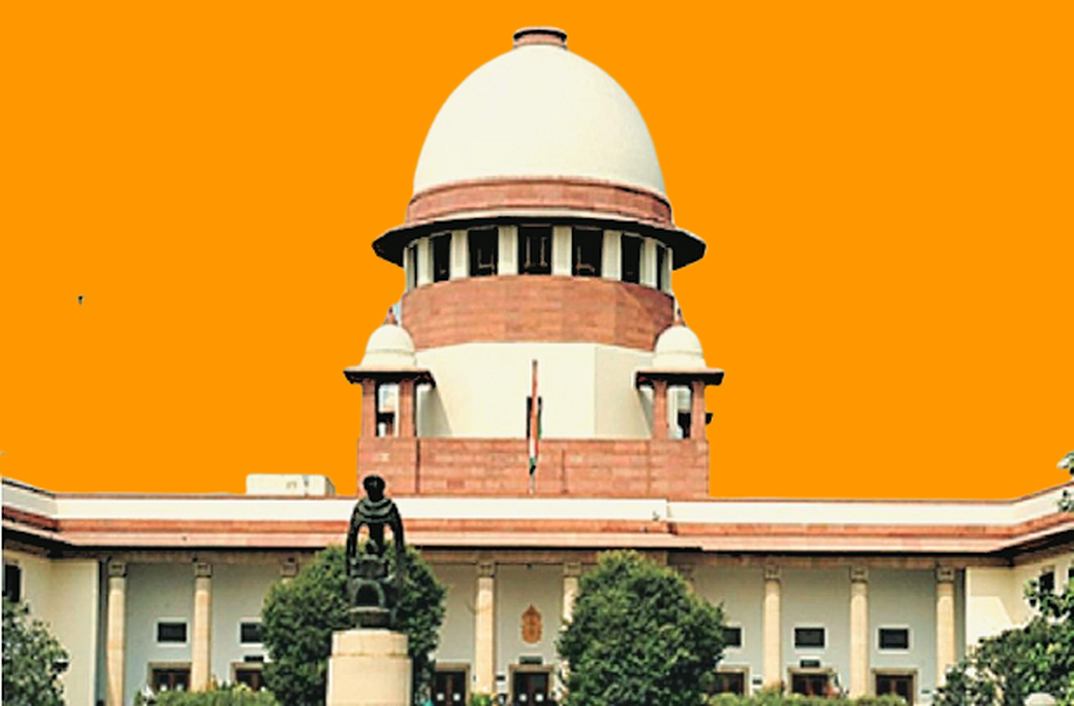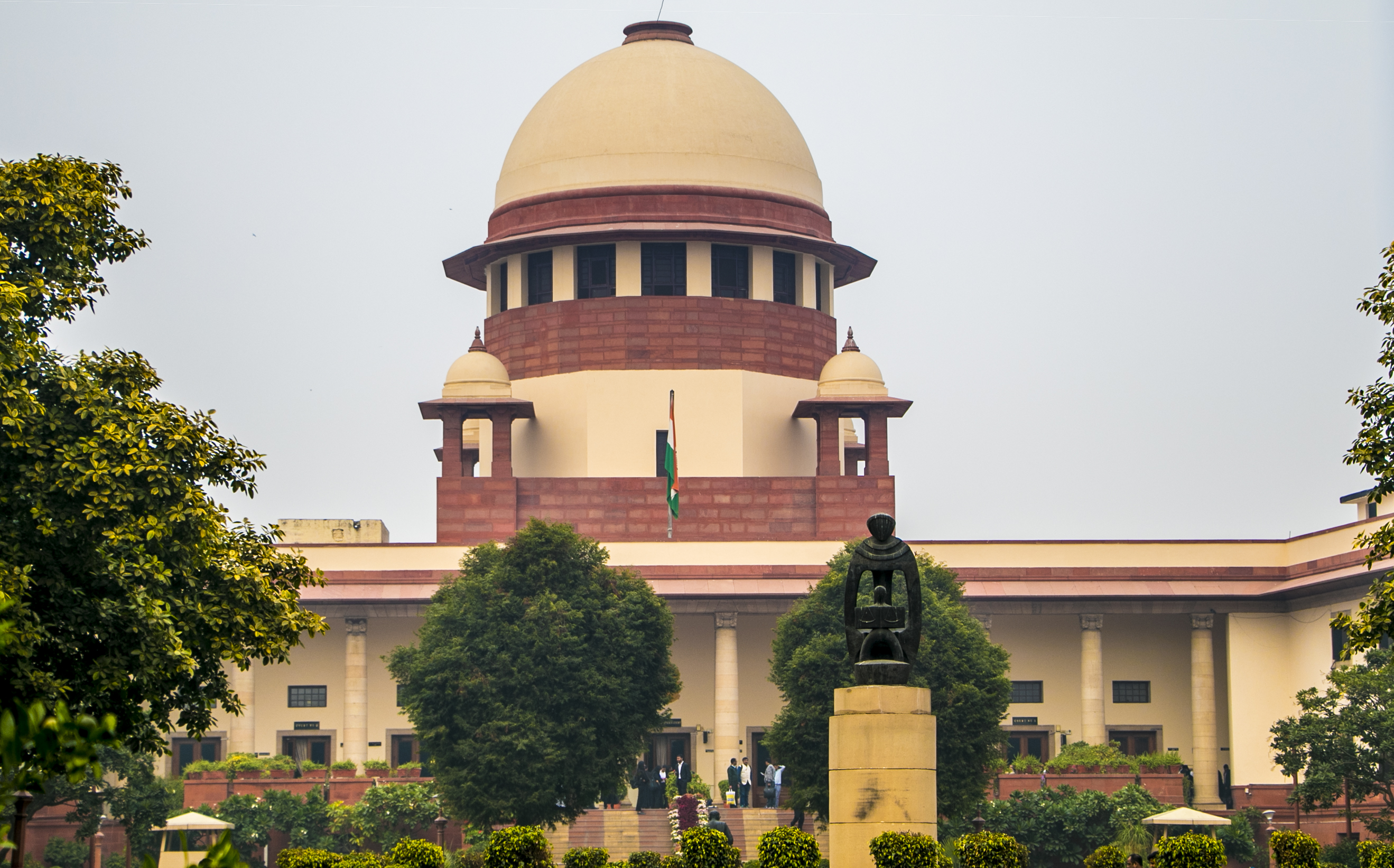Only on basis of sole circumstance of recovery of blood-stained weapon, it cannot be said that prosecution has discharged its burden of proving case beyond reasonable doubt: SC quashes murder conviction
Justices B.R. Gavai & Sandeep Mehta [24-01-2024]

Read Order: RAJA NAYKAR VERSUS STATE OF CHHATTISGARH [SC- CRIMINAL APPEAL NO. 902 OF 2023]
Tulip Kanth
New Delhi, January 25, 2024: The Supreme Court has set aside an order of conviction in a murder case where the prosecution had utterly failed to prove beyond all reasonable doubt that it was the accused alone who had committed the crime.
The facts leading to the present appeal were that on October 21, 2009, the half-burnt body of Shiva alias Sanwar (deceased) was found behind a temple near Shastri Nagar ground. The prosecution case was that Mohan – the husband of Accused No. 2 and brother of the Appellant was killed by the deceased and as its offshoot, the Appellant committed the murder of the deceased by causing 24 stab wounds on his body. He then wrapped the body in a blanket with the help of other accused persons, took it behind the temple where the half burnt body of the deceased was found. Postmortem examination of the body of the deceased was conducted by the doctor (P.W.11) who observed as many as 24 injuries on the deceased. According to him, after commission of murder, the body of the deceased was burnt and his death was homicidal in nature.
It was further the case of the prosecution that an electricity bill in the name of one, Alakh Verma was found from the body of the deceased, on the basis of which the police proceeded with further investigation. In pursuance of the disclosure statements of the accused persons, seizure was effected and the police concluded that the deceased was murdered by the Appellant and the body was then taken with the help of the other accused persons and an attempt was made to burn the body. At the conclusion of the investigation, a charge-sheet came to be filed and at the conclusion of trial, the Trial Judge found that the prosecution had succeeded in proving that the Appellant had committed the murder of the deceased.
The appeal before the Top Court was filed against the order of the Division Bench of the High Court of Chhattisgarh, Bilaspur thereby dismissing the appeal filed by the Appellant-Accused No. 1 and confirming the order of conviction.
The appellant submitted that there was no evidence at all which established the guilt of the appellant beyond reasonable doubt. It was submitted that from the evidence of the father and brother of the deceased, it would reveal that the dead body of the deceased had not been identified and the prosecution had failed to prove that the dead body found in the garbage was that of Shiva.
On the contrary, the State Counsel argued that as per the FSL report, human blood was present on the dagger which was recovered at the instance of the present appellant. It was further submitted that the recoveries made on the basis of the Memorandum under Section 27 of the Indian Evidence Act, 1872 would establish the guilt of the accused-appellant beyond reasonable doubt.
The Division Bench of Justice B.R. Gavai & Justice Sandeep Mehta , at the outset, made it clear that the prosecution case rested on circumstantial evidence. Reference was made to the judgment in Sharad Birdhichand Sarda vs. State of Maharashtra. The Bench highlighted that it is necessary for the prosecution that the circumstances from which the conclusion of the guilt is to be drawn should be fully established. The Court in Sharad Birdhichand Sarda case (Supra) had held that there must be a chain of evidence so complete as not to leave any reasonable ground for the conclusion consistent with the innocence of the accused and must show that in all human probabilities the act must have been done by the accused.
“It is settled law that the suspicion, however strong it may be, cannot take the place of proof beyond reasonable doubt. An accused cannot be convicted on the ground of suspicion, no matter how strong it is. An accused is presumed to be innocent unless proved guilty beyond a reasonable doubt”, the Bench further opined.
The Bench took note of the fact that the main circumstance on which the High Court and the Trial Judge found the appellant guilty of the crime was the recovery of various articles at his instance. They had further found that the pieces of blanket recovered from the place of incident and the place where the dead body was subsequently taken for being burnt, were found to be identical/similar. The High Court had observed that specific questions were put to the appellant in his examination under Section 313 of the Code of Criminal Procedure, 1973 recovery of various articles at his instance and also regarding the FSL report, but he had failed to give an explanation with regard thereto.
It was also observed by the Bench that the dead body was found much prior to the recording of the Memorandum of the appellant under Section 27 of the Evidence Act. Therefore, only that part of the statement which led to recovery of the dagger and the rickshaw would be relevant, the Bench held while noting that the Property Seizure Memo would show that the dagger was seized from a place accessible to one and all.
According to the prosecution, the incident took place on October 21, 2009 and the recovery was made on October 25, 2009.Moreover, the FSL report didn’t show that the blood found on the dagger was of the blood group of the deceased. Apart from that, even the serological report was not available. Another circumstance relied on by the Trial Judge was with regard to recovery of blood-stained clothes on a Memorandum of the appellant. The said clothes were recovered from the house of the appellant’s sister-in-law after four days.
The only circumstance that was of some assistance to the prosecution case was the recovery of dagger at the instance of the present appellant. However, the said recovery was also from an open place accessible to one and all. In any case, the blood found on the dagger did not match with the blood group of the deceased. While referring to the judgment in Mustkeem alias Sirajudeen v. State of Rajasthan, wherein it was held that sole circumstance of recovery of blood-stained weapon cannot form the basis of conviction unless the same was connected with the murder of the deceased by the accused, the Bench said, “Thus, we find that only on the basis of sole circumstance of recovery of blood-stained weapon, it cannot be said that the prosecution has discharged its burden of proving the case beyond reasonable doubt.”
“Merely on the basis of suspicion, conviction would not be tenable. It is the duty of the prosecution to prove beyond all reasonable doubt that it is only the accused and the accused alone who has committed the crime. We find that the prosecution has utterly failed to do so”, it further added.
On finding of the High Court that the appellant had failed to give any explanation in his statement under Section 313 Cr. P.C., the Bench found that the High Court had failed to appreciate the basic principle that it is only after the prosecution discharges its duty of proving the case beyond all reasonable doubt that the false explanation or non-explanation of the accused could be taken into consideration.
Thus, allowing the appeal, the Bench quashed the order of conviction and directed the appellant to be released forthwith.
Sign up for our weekly newsletter to stay up to date on our product, events featured blog, special offer and all of the exciting things that take place here at Legitquest.




Add a Comment